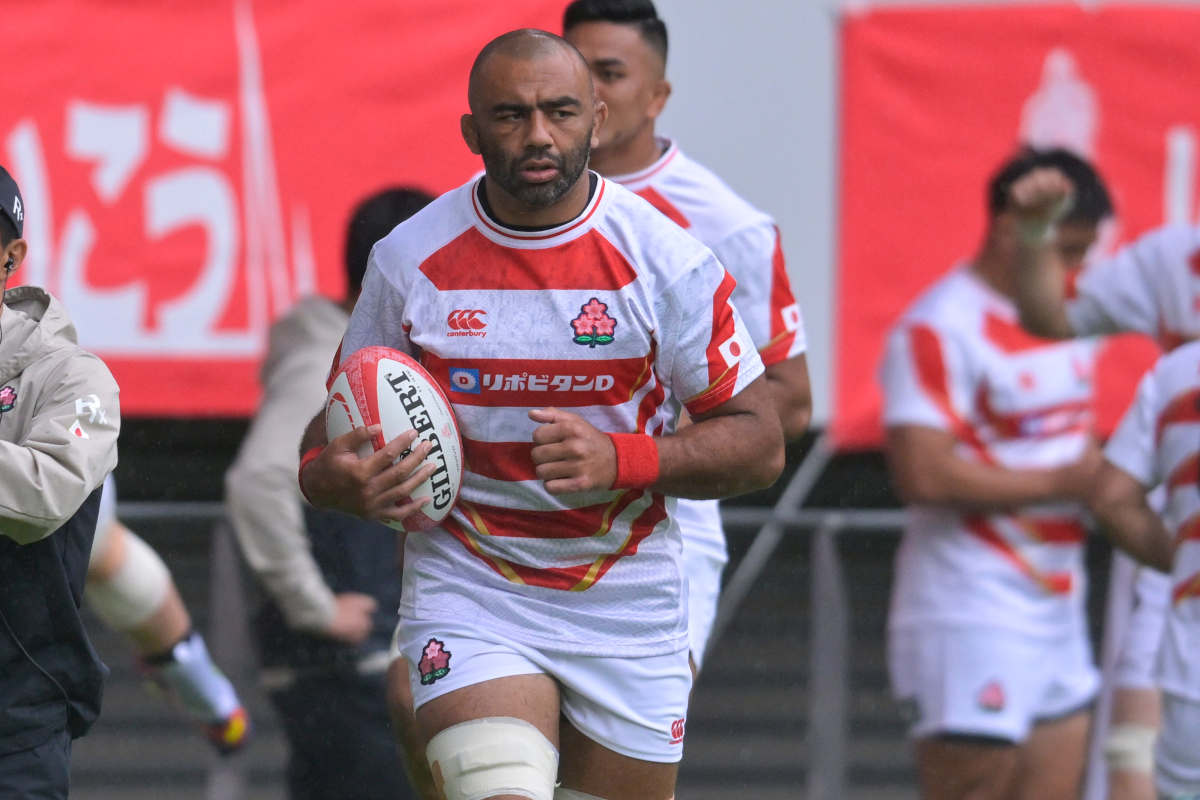Twelve years is a long time in rugby. When Eddie Jones first took charge of Japan in 2012, they were placed outside the top 10 in the world rankings, facing a trip to Kazakhstan to play in front of 3,400 fans for his first match as head coach.
Fast-forward 12 years on the eve of his second spell, and Japan has enjoyed a meteoric rise in the global rugby landscape, mixing it with the ‘big boys’.
A home Test against England for Jones’ first game back at the helm is testament to how far Japan have come in the past decade – with a 60,000-crowd likely to greet the 64-year-old at the National Stadium in Tokyo this weekend.
It is a far cry from that first game under Jones in Almaty in 2012.
In the intervening 12 years, the Brave Blossoms have made great strides on the pitch. Their historic victory over the Springboks in the 2015 World Cup, coupled with their iconic home RWC campaign four years later – including wins over Ireland and Scotland – are stand-out memories.
And while there have been no headline scalps since then, Japan have run both the All Blacks and France close, finishing within a score of both.
It was Jones who placed his faith in Japanese players when he first took over, attempting to establish their own distinct playing style and lessen their reliance on overseas recruits.
The on-field success is not the only area that has seen significant changes since Jones’ first tenure though.
It was the Australian who placed his faith in Japanese players when he first took over, attempting to establish their own distinct playing style and lessen their reliance on overseas recruits.
That first team he named against Kazakhstan in 2012 was composed solely of Japanese-born players.
The first squad of his second tenure may have more of a foreign tinge to it, with no fewer than 15 of the initial 34-man squad born outside of Japan.

But in the past decade the country has been strategically cultivating player pathways at university level from the likes of Tonga and New Zealand – with Kelston Boys High School and Tongan College both playing a large role.
Of those 15 overseas players in the current squad, only four have not come through the Japanese education system.
The bulk of those overseas-born selections come in the back row – with Japan in need of all the reinforcements they can get in that department.
They would be recruited by Japanese universities and given time to acclimatize to the culture, while at the same time satisfying World Rugby eligibility requirements via the residency rule through their four-year study period.
Until recently, Setsunan University was not a university renowned for producing national team players. But with Viliame Tuidraki, Jone Naikabula and Samisoni Tua – the latter withdrawing through injury – they had a staggering three players in Jones’ first squad.
Only the prestigious rugby universities of Teikyo and Waseda boasted more alumni than the Osaka outfit.
Universities such as Setsunan highlight the diversification of universities among the current crop of Japanese players, which would not have been imaginable a couple of decades ago.
The bulk of those overseas-born selections come in the back row – with Japan in need of all the reinforcements they can get in that department.

After ruling himself out of the summer Tests back in May, RWC 2023 captain Kazuki Himeno will not feature at all, while Wild Knights flanker Ben Gunter – who travelled but did not feature in France last autumn – has also sustained an injury in the past week.
Jones would ordinarily turn to the likes of Tevita Tatafu to spearhead the Japan pack. However, the Bordeaux No.8 is still in domestic action, gearing up to face Stade Francais in the Top 14 semi-finals this weekend.
The Kobelco Steelers back-row duo of Amanaki Saumaki and uncapped Tiennan Costley are hotly tipped to feature – both of whom have alternated with and played alongside Ardie Savea in the red of Kobe this year. As far as back-row mentors come, you could do a lot worse than the current World Rugby Player of the Year.
The Kobe duo – notably former winger Saumaki – have the ability to take up positions in wide channels, a quality Jones developed a fondness for among his loose forwards in his previous coaching roles with Australia and England.
Jones enjoys an almost god-like reputation in Japan, aided by his 2015 exploits against the Springboks, after which his face was plastered across billboards and advertising campaigns in Tokyo.
Those roles were anything but uneventful, with Jones enjoying a frosty relationship with the local media in both countries. He will surely welcome a return to the uncritical Japanese media on his ‘second coming’.
Jones enjoys an almost god-like reputation in Japan, aided by his 2015 exploits against the Springboks, after which his face was plastered across billboards and advertising campaigns in Tokyo.
Don’t be surprised to see a ‘Lost In Translation’-esque whisky advert featuring Eddie surface any day now.
There is a distinctly youthful feel to Jones’ first squad, with 15 uncapped players in the initial squad of 35. The backs average just seven caps, while four of the six props have yet to play a Test.

A changing of the guard is under way with no places for experienced props Keita Inagaki and Koo Ji-Won, mainstays in the front row in recent years, including their heroic RWC on home soil.
Instead, Jones has turned to universities in the front row, calling on Teikyo’s Tsubasa Moriyama and Waseda’s Kenji Sato.
Keep a sharp eye on Sato. A ‘winger in a forward’s body’, the 21-year-old hooker was an explosive winger during his early rugby career, before making the move to number eight at high school with Toin Gakuen.
After guiding Toin Gakuen to successive championships, he progressed to Waseda University, making the unusual move to hooker at the age of 19, where he has since led Waseda to the All-Japan University Final last year, now captaining the team.
This isn’t the first time Jones has turned to universities to help the national team.
If this new generation of Japanese players can enjoy half the career Leitch has had, the Brave Blossoms jersey will be in very safe hands for the foreseeable future.
Both Kenki Fukuoka and Yoshikazu Fujita were called up by Jones whilst at university – even making the RWC 2015 squad at the time.
Those inclusions in 2015 were deemed master strokes and Jones will be hoping for similar success in his second stint.
The narratives of a ‘transitional phase’ and ‘young squad’ are there for him should he need them though, with Jones essentially buying himself a get-out-of-jail card should things not go to plan this year by placing his faith in a new generation of players.
While it is indeed a changing of the guard for the Brave Blossoms, it would be remiss not to mention Michael Leitch, who made his debut a full four years before Eddie Jones’ first game in charge of Japan – ironically, like Moriyama and Sato, while still a university student in Japan.
The old warhorse is still going strong, 17 years after his Test debut, following an outstanding career that has featured four Rugby World Cups and many highs.
If this new generation of Japanese players can enjoy half the career Leitch has had, the Brave Blossoms jersey will be in very safe hands for the foreseeable future.



Comments
Join free and tell us what you really think!
Sign up for free